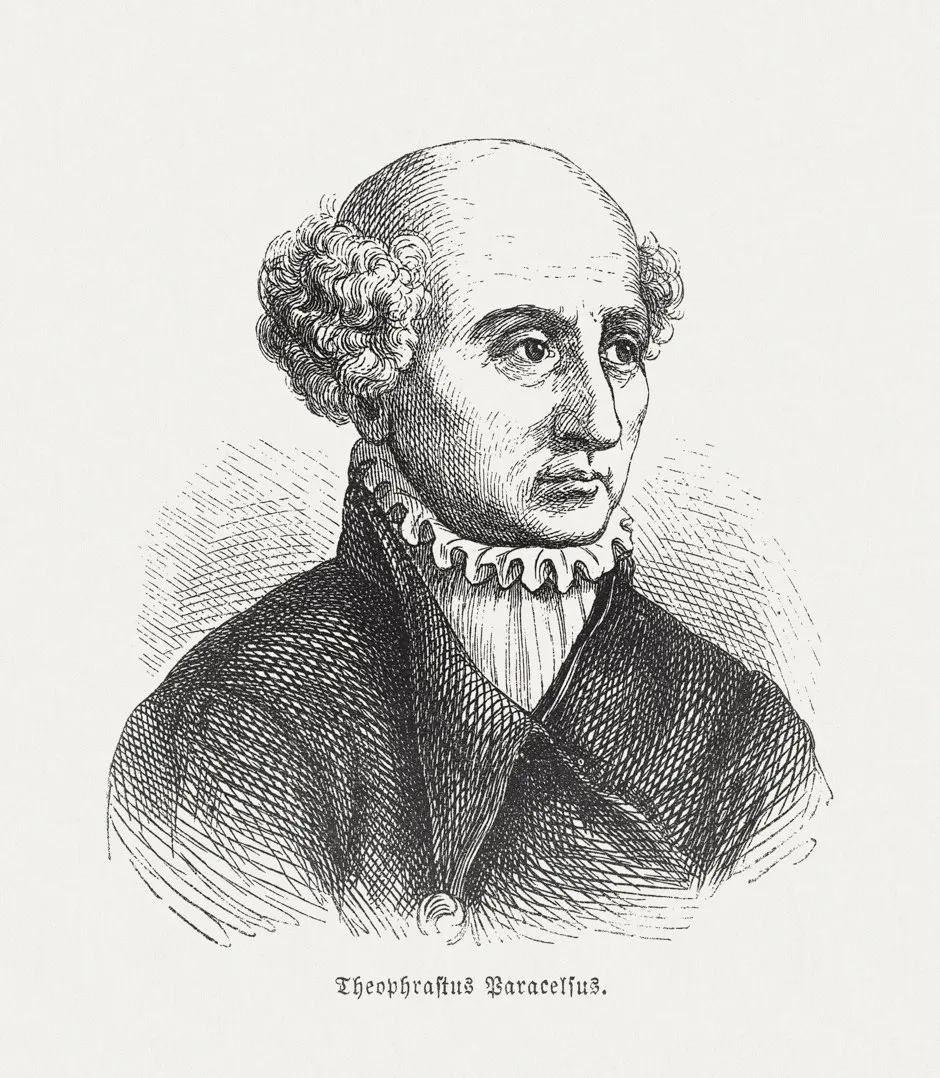William Shakespeare is associated with many things - love, jealousy, great speeches and men in big ruffs holding skulls - but it’s not often you would expect to see his name and 'science' in the same sentence.
Many people have marvelled at the Bard’s apparently detailed knowledge of a wide variety of subjects, and science, particularly medical science, is no exception. His references to all aspects of medicine single him out among his contemporary playwrights, both in terms of the huge number of references he made as well as the level of detail he included.
The science Shakespeare was describing is now four hundred years old but it was completely up-to-date for the time he was writing in. And, though there have been considerable scientific advances in the intervening four centuries, the Bard’s works contain some extraordinary insights and astonishingly accurate observations, even by today’s standards.
Blood will have blood (Macbeth)
There is one notable example where Shakespeare appears to have been ahead of his time. There are a few lines in Julius Caesar that hint at the idea that blood circulates around the body: ‘You are my true and honourable wife, / As dear to me as are the ruddy drops / That visit my sad heart.’ There are other lines in other plays that drop similar hints at the process.
Read more about science history:
None of these are a detailed scientific description of circulation of the blood, but they are certainly suggestive. The theory is nothing surprising today but at the time the concept was scarcely known and a full theory, by William Harvey, wouldn’t be published until 1628, 12 years after Shakespeare’s death.
The Bard certainly kept his finger on the pulse of current medical theories. In All’s Well That Ends Well, he wrote some lively banter about the two theories of medicine doing battle to save lives in the 16th and 17th Centuries.
On one side was the ancient theory of the four humours that had to be kept in balance to maintain good health. On the other side, was the new ‘chemical’ theory put forward by renaissance physician Paracelsus.
Paracelsus’s chemistry differed considerably to the modern view of the science, but his approach to medicine, based on close observation and using plant extracts and minerals, marked a significant shift in the way people thought about illness and its treatment.

Paracelsus might not have taken kindly to the way Shakespeare joked about his theories, but I hope he would have approved of his observational skills. The Bard is acclaimed for his detailed insight into all aspects of the human condition.
Characters from his plays have provided case studies for psychiatrists and dozens of academic papers have been written about his very perceptive psychological insights. He may have set his plays in situations that modern audiences struggle to relate to - ancient Rome, medieval battlefields and imaginary islands - but the characters in those plays and their emotional responses, to bereavement, jealousy and love, are no different to what we experience today.
To sleep: perchance to dream (Hamlet)
And it isn’t just psychologists who have found something of interest in Shakespeare’s works. Academics across a range of disciplines have found something of relevance to their field or a new perspective in his plays and poems. His detailed observations include the human body as well as the mind.

There are references to sleep disorders, from sleep apnea, that leaves Falstaff ‘snorting like a horse’ in the first part of Henry IV, to perhaps most famously sleep-walking and sleep-talking by Lady Macbeth. In fact, there are so many references to sleep disorders that experts have wondered if Shakespeare was writing from bitter personal experience.
References to up-to-date medical theories, insights into human psychology and descriptions of sleep disorders would be impressive in themselves but there is so much more.
Every type of medical practitioner is referred to in his plays from physicians to surgeons and midwives to wise-women. Methods of diagnosis, including the rather unpleasant and highly unreliable method of uroscopy (examining a patient’s urine), gets a sarcastic remark or two.
The effectiveness of contemporary medicines also comes in for some scathing remarks, ‘Throw physic to the dogs!’ (Macbeth). Shakespeare may not have had much faith in medicines but he held the physicians in high regard. But what really seems to have interested him are the diseases they were trying to treat.
A pox o' your throat (The Tempest)
Every Shakespeare play contains some reference to one disease or another, often with detailed descriptions of their symptoms. There is the shivering associated with malaria and the buboes associated with the plague.
But one disease gets mentioned more than any other, and in such detail that some think Shakespeare was writing from first-hand knowledge. The disease was known by many names, the ‘malady of France’ (that kills Doll in Henry V), the ‘infinite malady’ (Timon of Athens), ‘the hoar leprosy’ (also Timon) and pox (in a total of 15 plays), but we know it today as syphilis.

The symptoms of the disease were many and varied, and if you want to know what to expect from untreated syphilis you could do worse than read Thersites' eight-line description of symptoms in Troilus and Cressida. There were no effective remedies available to treat the disease until the 20th Century, but that didn’t stop people before then from trying.
Many of Shakespeare’s plays, and some of his love poetry, contain references to these desperate remedies. Mercury was principal ingredient in most treatments. It was swallowed, smeared on syphilitic sores and sweated into patients who sat in tent-like structures with their heads poking out the top and their bottom placed on a chair under which mercury compounds were heated by a fire.
Mercury had little chance of curing the pox and a very real possibility of poisoning the patient in the process. In Troilus and Cressida, a play so packed with syphilitic references it is known as the ‘pox play’, Pandarus knows that his mercury treatment is unlikely to help him and death is inevitable. He even predicts how long he has left, just two months.
Fancy winning a copy of Death By Shakespeare? We have five copies to give away. Read this article, then enter the competition.
Pandarus’s chances of survival are realistic. Shakespeare was writing in an era where the causes of disease weren’t understood and effective treatments were practically non-existent. The grim reality of death, from even the most trivial of illnesses and infections, would have been well-known, up close and in detail.
All that lives must die (Hamlet)
People living in the 16th and 17th Centuries visited the sick and dying and got personally involved in caring for friends and relatives in their last moments. They also witnessed public executions, saw street brawls and lived in constant fear of visitations from the plague.
Death was a familiar feature of everyday life and Shakespeare didn’t shy away from including it in his work. Spectacular deaths, noble deaths, tragic deaths and even mundane deaths are all included in his plays and poems, sometimes in astonishing detail.
Queen Katherine slowly fading away in Henry VIII, as her body shuts down, and Falstaff, with cold legs and plucking at the bedclothes with his fingers (technically known as carphologia, a sign of extreme exhaustion and impending death) in Henry V, are examples of what might really be expected during death from natural causes.
Shakespeare understood very well the variety of damage sharp weapons could inflict on the human body. In The Rape of Lucrece, he graphically describes the sucking wound produced by a stab to the chest, blood ‘bubbling from her breast,’ and goes into great detail about the changes the blood goes through as it separates and coagulates.
Read more about death:
- To death and back: what near-death experiences could tell us about dying
- Wild ideas in science: Death is reversible
- The Immortalists: can science defeat death?
The Bard also knew that there could be signs on a body to determine if death was from natural causes or criminal. The examination of Duke Humphrey’s body in the second part of Henry VI is almost CSI: Shakespeare.
The Bard, first and foremost, wrote brilliant plays to entertain his audiences in Renaissance London. He had no obligation to historical or scientific accuracy. By today’s standards the science that was known at the time was often basic and sometimes completely wrong.
But, for all that, Shakespeare’s science was often surprisingly accurate, particularly when it came to the subject he knew most about, living and dying in Elizabethan England.
Death By Shakespeare: Snakebites, Stabbings and Broken Hearts by Kathryn Harkup is out now (£16.99, Bloomsbury Sigma).
